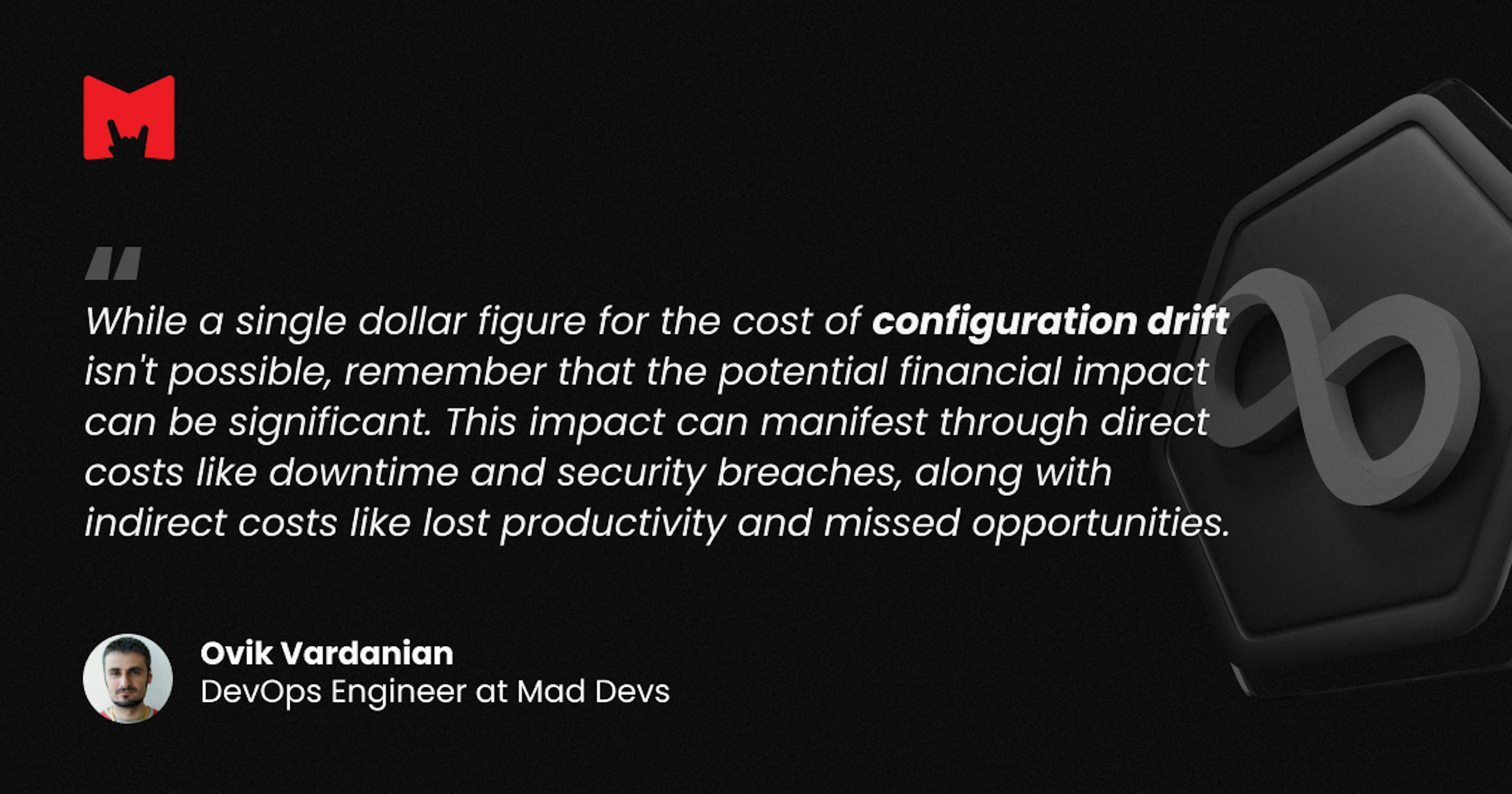
No Bad Questions About DevOps
Definition of Configuration drift
What is configuration drift
Configuration drift refers to the phenomenon where a system's actual configuration deviates from its desired state, often due to incremental changes or manual adjustments.
This can happen due to:
- Manual changes. DevOps make tweaks on the fly without proper documentation or version control.
- Automated deployments. Scripts or tools introducing inconsistencies across environments.
- Software updates. Patches and upgrades unintentionally alter settings.
- Environmental factors. Hardware failures or power outages corrupting configurations.
The consequences, however, can be far from silent.
Imagine a well-orchestrated symphony, each instrument playing its part in perfect harmony. Now, picture a few instruments slowly going out of tune and the melody becoming discordant.
What are the common issues that come with configuration drift?
Poor communication
The disjoint team makes changes that ripple downstream, leaving systems bewildered and broken.
Remember: Foster open dialogue between teams to ensure changes are planned, coordinated, and understood. There is always a risk that someone might face micro context in project scopes, arrangements, and limitations. Different contexts and lack of understanding lead to unexpected results.
Hotfixes
Quick fixes under pressure often skip proper rollout procedures, creating inconsistent configurations.
Remember: Establish clear hotfix procedures, ensuring they're documented and rolled back when the pressure subsides.
Critical updates
Like hotfixes, rushed security updates can introduce drift due to bypassing standard processes.
Remember: Treat updates respectfully, planning and testing them before unleashing them on your systems.
Lack of automation
Manual changes in legacy systems, especially undocumented ones, breed uncontrollable drift.
Remember: Embrace automation wherever possible. Infrastructure as code and CI/CD pipelines become your allies, tracking changes and enforcing consistency.
Convenience changes
Temporary adjustments, like elevated permissions or test installs, easily morph into permanent drift if forgotten.
Remember: Even temporary changes can become permanent problems. Schedule automatic rollbacks or reminders to ensure they don't become another face of drift.
The costs of configuration drift

Here's a summary of the potential financial impact of configuration drift:
Direct costs
- Downtime—Upwards of $5,600 per minute, according to Gartner's 2014 estimate. This cost can vary greatly depending on the system's criticality and traffic volume.
- Security breaches—The average data breach cost reached $4.24 million globally in 2023), and misconfigurations can be a contributing factor.
Indirect costs
- Lost productivity — According to The State of DevOps 2023, Inconsistent configurations hinder DevOps teams, leading to wasted time and resources spent on troubleshooting and remediation.
- Compliance fines — Cloud security reports reveal the prevalence of misconfigurations in cloud environments. These misconfigurations can lead to compliance fines, adding to the financial burden of drift.
- Missed ROI — The Business Value of Configuration Management stated that organizations miss out on potential cost savings and efficiency improvements by neglecting to invest in configuration management.
How to manage configuration drift?
Configuration drift can be managed through a three-part strategy:
- Reduce drift by setting clear rules, automating as much as possible, and pre-configuring developer workspaces.
- Detect drift by documenting a system's intended state and regularly auditing its current state.
- Remediate drift by rolling changes back, using automated tools to restore systems to their last documented state, or carefully applying hotfixes. Treat configurations like code, storing them in version control systems like Git for tracking changes and reverting to known-good states.
Key Takeaways
- Configuration drift is the gradual, unintentional divergence of a system's configuration from its desired state.
- Unintended changes: Configurations drift from their ideal state due to manual tweaks, automated deployments, updates, and even environmental factors.
- Hidden consequences: Drift can cause communication breakdowns, security vulnerabilities, compliance issues, and wasted resources.
- Direct costs: Downtime and security breaches can cost thousands per minute.
- Indirect costs: Lost productivity, fines, and missed efficiency opportunities add to the financial burden.
- Three-part strategy: Reduce, detect, and remediate drift through automation, documentation, and proactive management.

